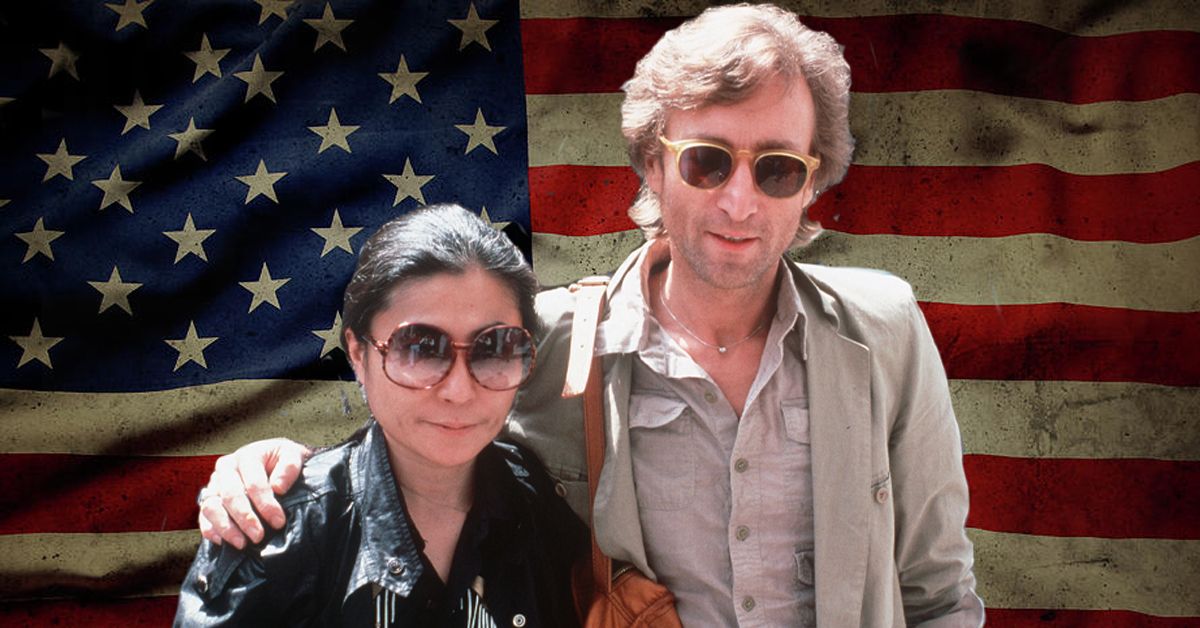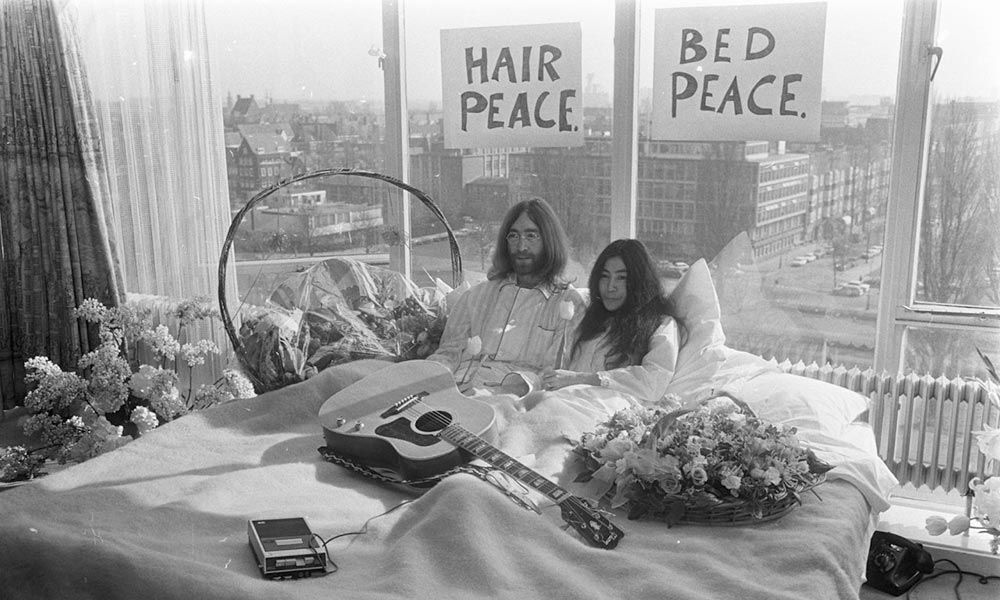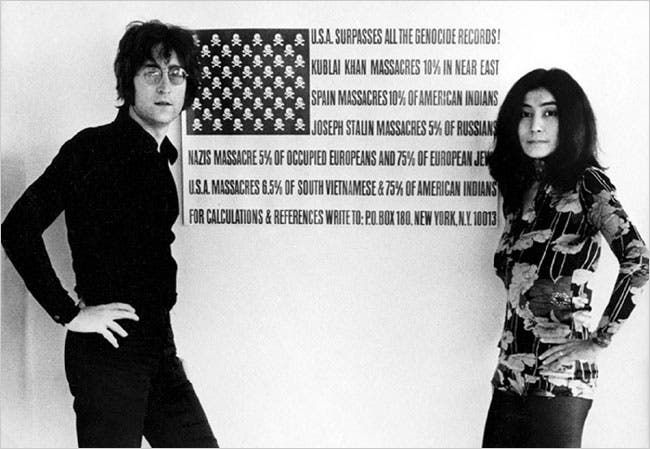For many, the face of John Lennon is directly associated with the peace and love that circulated during the hippie movement of the late 1960s and early 1970s. Music fans will remember him as one of the most iconic members of The Beatles, founding the group and a songwriting career that has yet to be rivaled. However, those who were working for the FBI under J. Edgar Hoover may recall the musician's reputation a bit differently.
His Honeymoon
In March of 1969, John Lennon and Yoko Ono were on a European mission to be married. After a failed attempt in the U.K and another unfortunate technicality in Parisian nuptial law, the couple finally found a beautiful location at The Pillar of Hercules in Gibraltar.
Just five days after exchanging vows, John and Yoko set out on a honeymoon that would catch the attention of the entire world. Starting off in Amsterdam, the two embarked on a 7-day bed-in for peace, where they invited the press into their honeymoon suite 12 hours a day to witness their protest. According to the newlyweds, they were staying in bed to 'protest war' and growing their hair out to 'preach world peace.'
From Amsterdam, they continued on to Vienna for a press conference where Lennon and Ono both appeared on stage in a white bag as a silent protest, followed by a quick stop in the Bahamas and eventually settling down for another week in Montreal.
'Give Peace A Chance'
While staying at The Queen Elizabeth Hotel in Montreal, John and Yoko invited reporters in again (along with notable visitors like civil rights activist and comedian Dick Gregory and poet Allen Ginsberg). During this stay, they also recorded 'Give Peace a Chance' under the Plastic Ono Band project, which featured backup vocals provided by a group that included LSD advocate Timothy Leary and the musical comedian, Tommy Smothers.
The song became more than just a rambling chant of hippies and was eventually regarded as a highly controversial anti-war song in the eyes of the Nixon administration. Particularly, after nearly half a million people sang along to it in D.C., during the Vietnam Moratorium Day in November of 1969.
In the time after 'Give Peace A Chance,' John and his new bride dedicated efforts to sending out acorns "for peace" to world leaders and purchasing full-page advertisements and billboards reading, “WAR IS OVER! IF YOU WANT IT.”
A Paranoid President
By the time John Lennon moved to the United States in 1971, the White House and the Hoover-headed FBI had already deemed him a threat to the conservative agenda. He and Yoko Ono were making waves worldwide, inspiring young people all over to question authority. Upon arrival in New York City on a visa, John started to associate himself with radical anti-war activists, and the FBI then put Lennon under surveillance.
The U.S. Immigration and Naturalization Service tried to deport him numerous times, especially following Senator Strom Thurmond's memo to the Nixon White House, in which he warned that John Lennon would use rock music and politics in an effort to organize young people to vote against Nixon in 1972.
It's important to note that the 1972 election was the first time Americans 18 years of age or older were permitted to vote, prior to that the voting age was 21. And while Nixon resented Lennon's preaching of left-leaning politics to younger Americans, the FBI became more and more aware of the impact any dramatic deportation may have on young voter turnout and retaliation.
Classified Lyrics?
Historian Jon Weiner fought for almost 20 years to gain access to FBI files on Lennon and confirmed in an NPR interview that the agenda against Lennon and his naturalization process was an ongoing effort encouraged by President Nixon. Weiner's book, Gimme Some Truth: The John Lennon FBI Files, is revered as one of the most in-depth analyses of the relationship between John Lennon and the United States government and depicts just how absurd their investigations were.
The FBI started its obsession with Lennon after taking note of his lyrics and remarks on stage during a performance at the John Sinclair Freedom Rally in Michigan in 1969 (an event held to protest the 10-year prison sentence assigned to a poet for 2 marijuana joints).
From that point on, the continued surveillance mounted up a plethora of trivial observations that were classified for fear that their release would pose a "threat to national security." Though it's hard to comprehend why the lyrics to his track 'John Sinclair' needed to be locked up, considering they appeared on the sleeve of his album.
Numerous other examples of abuse of power appear in some 300 pages uncovered by Jon Weiner, including plans to convict Lennon on narcotic charges in Miami to make him more immediately deportable and a wanted poster that featured a Lennon look-alike.
A Defeated Activist
In 1972, as his immigration battle continued, John Lennon decided to withdraw from the plans to demonstrate against Nixon and the mission to get youths registered to vote. According to Weiner, "in the ensuing three-year legal battle he lost his artistic vision and energy, his relationship with Yoko disintegrated, and he gave up his radical politics. In this period Lennon became a defeated activist, an artist in decline, an aging superstar." J. Edgar Hoover died in May of 1972, taking some of the heat off the former Beatle, but he did not receive his green card until after Watergate when Gerald Ford took office.
Ultimately, the FBI succeeded in neutralizing Lennon and deterring him from impacting Nixon's reelection, but not from inspiring millions of people around the world.





